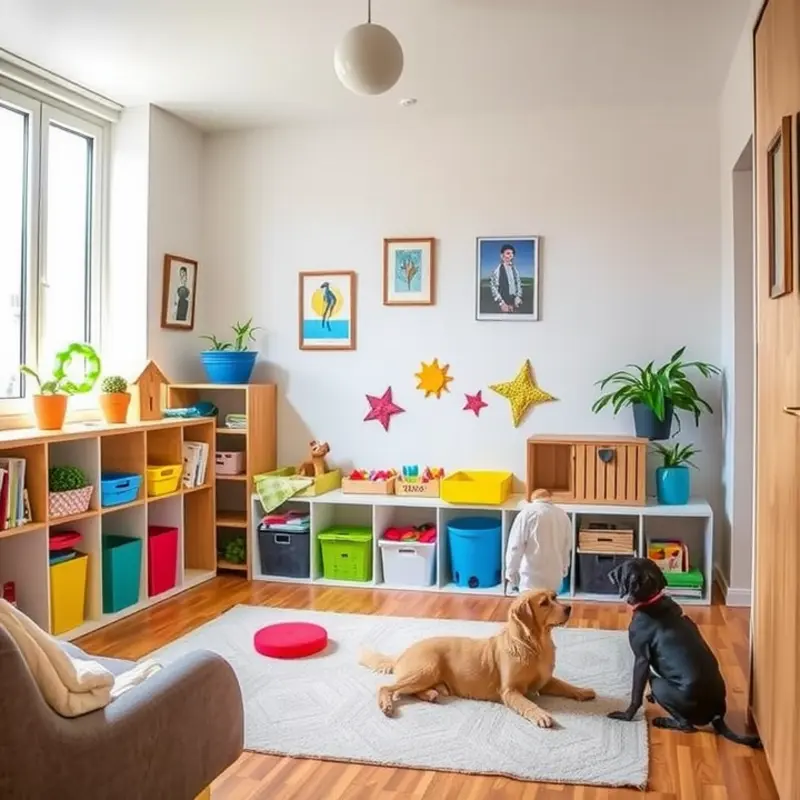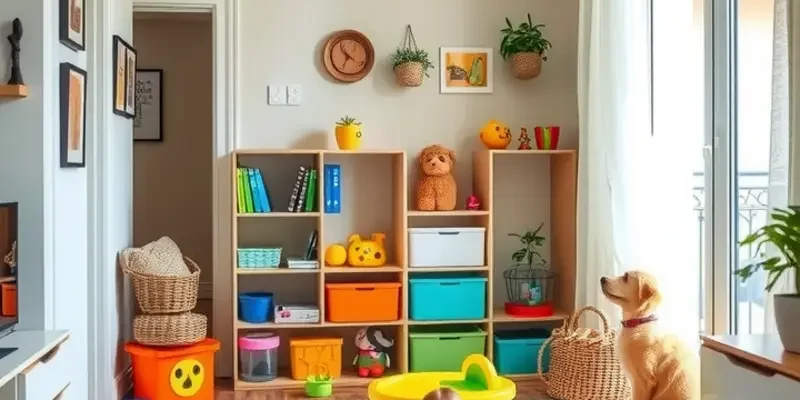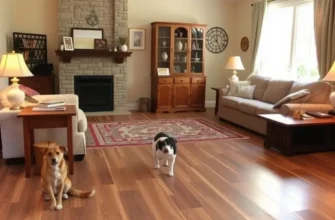Creating a nurturing environment in an apartment can be a delightful yet challenging experience for families, pet owners, and couples. Balancing the needs of children and pets in a limited space requires thoughtful planning and flexible approaches to discipline. The goal is to cultivate an atmosphere filled with love and safety that allows your little ones—and furry friends—to thrive without overwhelming your apartment or your peace of mind. In this guide, we share practical, apartment-friendly discipline strategies that encourage positive behavior while respecting the confines of your living space. Discover how to address misbehavior effectively, maintain a calm living environment, and nurture good habits, all while ensuring everyone—kids and pets alike—feels secure and supported. Start your journey towards a harmonious home today!
Creating Safe Boundaries

In apartment living, space is a precious resource, which makes setting boundaries crucial for harmony. Creating safe and clear boundaries not only fosters a sense of security but also allows children and pets to thrive within their limits. Here, we explore strategies to effectively set and maintain these boundaries in small spaces.
Physical Boundaries for Children and Pets
Establishing physical boundaries begins with thoughtfully arranging your living space. Use furniture to delineate areas intended for play, rest, and communal activities. For example, a small bookshelf or a foldable screen can act as a divider between play areas and more adult-centric spaces. Consider using renter-safe shelf risers to maximize vertical space, ensuring that needed items remain accessible but not intrusive.
Creating designated zones encourages children and pets to respect each area’s purpose. For children, label these zones with fun, illustrated signs indicating where toys should be stored or where quiet time should be observed. For pets, clearly define feeding and sleeping areas to help them recognize their own space within the home.
Emotional Boundaries to Foster Independence
Just as important as physical boundaries are the emotional ones we establish to foster a child’s sense of independence while respecting the family dynamic. Encourage children to communicate when they need personal space, empowering them to voice their feelings and understand the concept of mutually respected boundaries.
One practical method to reinforce emotional boundaries is modeling and role-playing scenarios. Teach your children how to express their need for space politely and how to respect when others do the same. This practice helps integrate emotional intelligence into their daily routine, making them more aware and considerate of other family members, including their pet companions.
Reinforcing Boundaries
The consistency of boundary reinforcement is essential in any environment, particularly in apartments where proximity can blur lines. Strategies to reinforce boundaries include creating a routine that incorporates boundary reinforcement as part of their daily activities. Visual reminders such as charts or stickers can help children track their understanding and respect for various zones.
For pets, positive reinforcement through treats and affection when they adhere to their boundaries enhances understanding and cooperation. In both cases, acknowledgment of good behavior encourages adherence to established norms.
Safety must also underline boundary-setting efforts. Ensuring that all areas are pet-proof and childproof will make enforcement easier and more effective. For guidance on pet safety, consider reviewing guidelines such as those found in our apartment pet vaccination guide.
In conclusion, creating physical and emotional boundaries in apartment settings involves thoughtful planning and consistent reinforcement. By fostering a space where boundaries are respected and understood, families can create a living environment where both children and pets feel secure and content. Developing these skills and practices not only maintains harmony but also enriches family dynamics in small spaces.
Positive Reinforcement Techniques

Positive reinforcement can be a parent’s best friend in the confines of an apartment. By encouraging good behavior in your children, you can maintain a harmonious living environment even in small spaces. Here are some creative ways to incorporate positive reinforcement into your daily routines.
Set Clear Expectations and Reward Efforts
Before implementing reinforcement strategies, ensure that children understand the rules and expected behavior. Communicate these clearly and consistently. Once these expectations are set, look for opportunities to reward efforts, not just accomplishments. This reinforces that trying hard is just as valuable as achieving the desired outcome.
Sticker Charts and Visual Trackers
Sticker charts and other visual trackers are excellent tools for young children. These charts can be placed in common areas like the kitchen or hallway, keeping the focus in a shared space. Each time a child demonstrates positive behavior, let them add a sticker. Completing a row or chart can lead to a reward, such as extra playtime or a choice of family activity. These visuals help children associate positive actions with rewards.
Verbal Praise and Encouragement
Never underestimate the power of verbal praise. Simple and specific affirmations like “I appreciate how you shared your toys with your sibling” go a long way. Such phrases can boost your child’s confidence and encourage them to continue the constructive behavior. Regular, sincere compliments make children feel valued and respected.
Create a Reward System
Design a system tailored to your child’s interests. This can include earning points toward a larger reward, such as a special outing or a new book. Ensure these rewards are not always material; experiences often create more lasting memories. Keep the goals realistic and attainable to maintain motivation.
Time with Pets as a Reward
If you have pets, integrate them into your positive reinforcement strategy. Children often respond well to a promise of extra time with their furry friends. Extra playtime with a pet can be a powerful motivator and helps children learn responsibility by caring for another living being.
Incorporate Creative Activities
Link positive reinforcement to activities that engage creativity. Let your child choose a do-it-yourself project as a reward, like creating renter-safe shelf risers. These projects can double as learning experiences and give children a sense of accomplishment and contribution.
Adjust to Family Dynamics
Every family is unique, and positive reinforcement should reflect your specific household dynamics. Customize rewards and strategies to fit your child’s personality and interests. Regularly reassess what motivates your child and adjust the approach as needed.
By using positive reinforcement techniques, parents can cultivate a calming atmosphere in the limited space of an apartment. Integrating these strategies with consistent rules and communication can make family living in small spaces a delightful experience for everyone.
Final words
Nurturing a peaceful apartment lifestyle while disciplining children and accommodating pets can be a fulfilling challenge. With clear boundaries and a focus on positive reinforcement, families can navigate misbehavior with compassion and effectiveness. Remember, your apartment should be a loving home for everyone, where kids and pets grow and learn together. Embrace these strategies, tailored for your space, and cultivate stronger bonds within your family and with your furry companions, creating a harmonious living environment that everyone will love.









